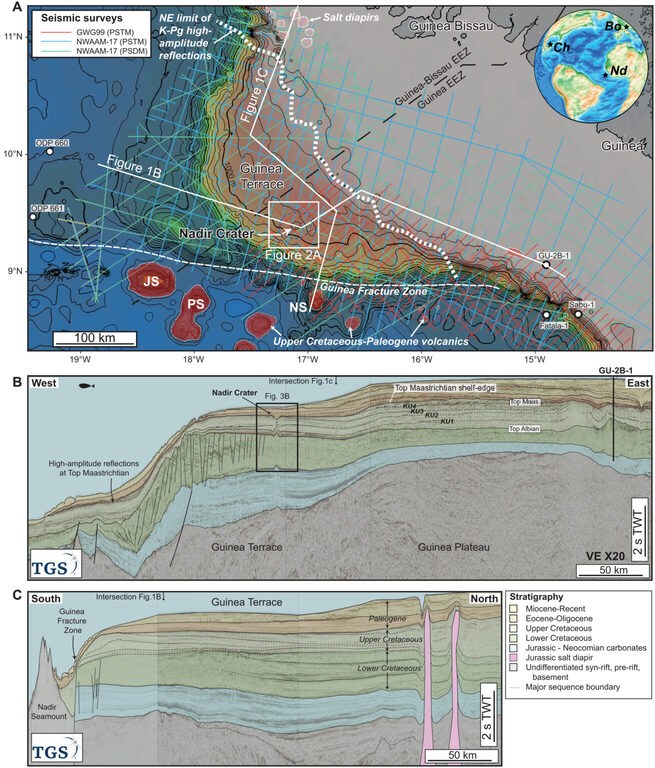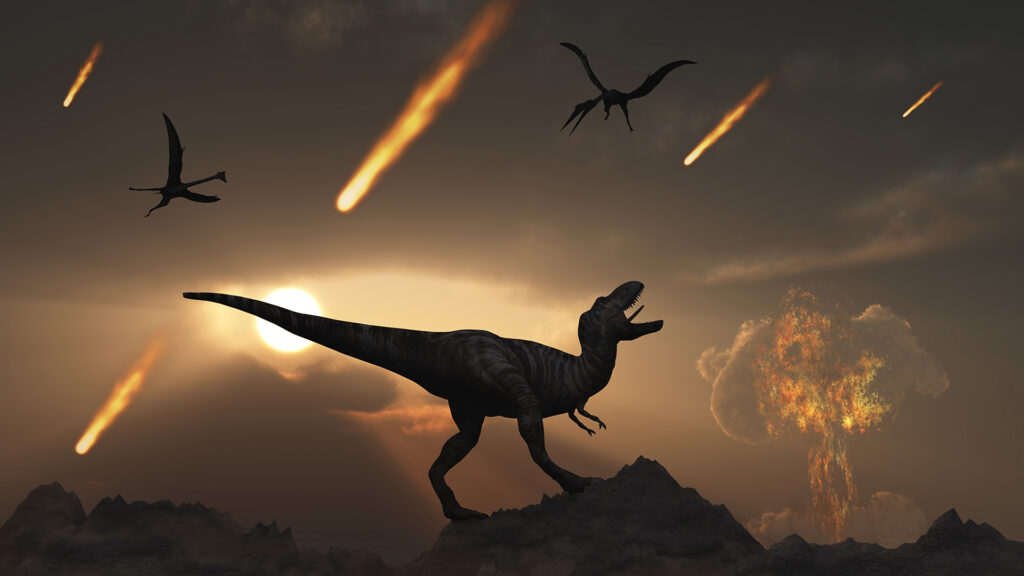A team of British researchers has announced the discovery of a crater located at the bottom of the Atlantic Ocean 400 km from West Africa. Preliminary analysis suggests that it was formed 66 million years ago, when a mass extinction occurred on Earth, which led to the death of dinosaurs.
Crater at the bottom of the Atlantic Ocean
The discovery was made during a study aimed at studying the tectonic processes that led to the separation of South America from the African continent. In the process of studying seismic data, scientists drew attention to a strange depression at the bottom of the Atlantic Ocean 400 km from Guinea.

A more detailed study of the data showed that it is an approximately circular formation with a diameter of 8.5 km and a depth (from the edge to the bottom) of 40 meters. It is hidden by 900 meters of water and 400 meters of sedimentary deposits.
According to the researchers, in order to make a final conclusion, they need to extract rock samples from the funnel. But all the information they have suggests that the structure found is an impact crater. This is indicated by its shape, signs of fracture and deformation of rocks, traces of material thrown out and the elevation inside the funnel, which looks like a central peak.

According to scientists, the celestial body that led to the formation of the crater had a diameter of about 400 meters. Its impact led to the release of energy equivalent to the explosion of five gigatons of TNT. The simulation results suggest that the collision led to the formation of a fireball with a diameter of over 5 km and a tsunami with an initial height of up to 500 meters.
Second dinosaur killer?
But the most interesting aspect of the find is the age of the crater. It is approximately 66 million years old (with an error of plus or minus 800 thousand years), which is very close in time to the mass extinction that led to the death of the dinosaurs. It is believed that it was caused by the fall of a 10-kilometer asteroid on the Yucatan Peninsula.

Such a close temporary neighborhood raises a legitimate question about whether these events were somehow connected. Perhaps the dinosaur that killed the asteroids disintegrated shortly before entering the atmosphere. Then the two strikes were separated by several days or even hours. It is also possible that both asteroids belonged to the same family, which arose as a result of the destruction of an asteroid in the Main Belt. In this case, they could fall to Earth with a difference of hundreds of thousands of years. Finally, the possibility of an ordinary coincidence cannot be ruled out.
In any case, despite serious local destruction, the celestial body that led to the formation of the newly found crater could not cause mass extinction. At the same time, if it really has to do with the asteroid that fell on Yucatan, the consequences of the second impact could further aggravate the situation for the earth’s flora and fauna and finally finish off the dinosaurs.
According to https://www.science.org
Follow us on Twitter to get the most interesting space news in time
https://twitter.com/ust_magazine
